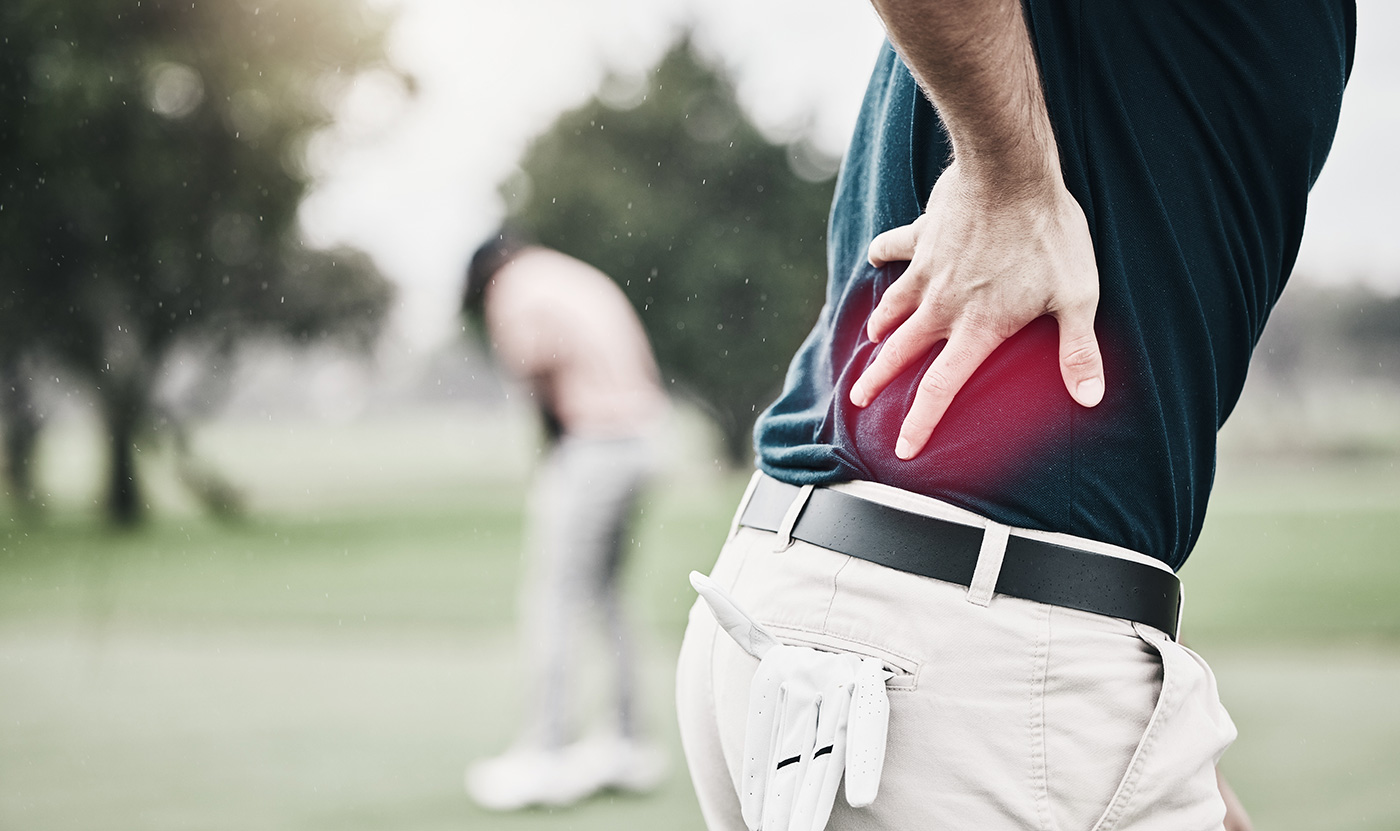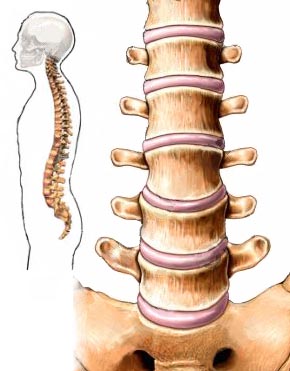
Chiropractic treatment and prevention of golf injuries
On this page we at the Isis Chiropractic Centres explain some of the most important things for you to do to avoid golf injuries; posture, warm-up and core stability training.
Golf is a sport that involves the entire body, making it susceptible to a wide range of injuries. Lower back pain is the most common golf-related injury, followed by pain in the neck, shoulders, elbows, wrists, knees, and ankles.
This article explores the causes of injuries, the importance of core stability in the golf swing, the spine and posture’s role in preventing injuries, and three key strategies to prevent injuries in golf.

Want to know more? Request a Callback
Or give us a call, to find out how we can help you with Golf Injuries and Chiropractic Treatment.
Book an Appointment
Schedule an appointment for Golf Injuries and Chiropractic Treatment tailored to your needs.
Golf, what a great game! Frustrating at times, no doubt, but the best game in the world, nevertheless.
If that is how you feel about the great game, what could be more frustrating than not being able to play golf because of an injury?
This page will help to explain the most important things for you to do to avoid golf injuries, although focusing on the back, it will help to avoid other injuries too. We will also explain how chiropractic treatment can help you if you are unfortunate to suffer an injury.
The golf swing is a very athletic movement that involves the whole body, therefore, injuries can happen to almost any structure of the body.
One of the most common symptoms from injuries in golf is lower back pain. It is the highest, most frequently occurring problem for any golfer including professional golfers. This is followed by a number of other symptoms in other areas such as the neck, shoulders, elbows, wrists, knees and ankles.
Each injury has to be evaluated and diagnosed properly to be effectively treated. We will talk about specific golf injuries later, but first of all we need to approach this subject in general terms and talk about concepts rather than specifics.
The injuries that stop you playing golf don’t necessarily need to be due to golf! They can be caused by everyday activities such as driving, DIY, gardening, work and other sports, anything that will put too much strain on your joints, ligaments and muscles.
For example, 80% of the population at one point in their life will suffer back pain, regardless of if they play golf or not.
So, although back pain is the most common golf injury, it is also the most common injury in most people’s lives. Therefore, much of the advice on this page will help you prevent injuries in everyday life too.
Injuries occur from trauma either from single or multiple events. Sports injuries can broadly be divided into two categories, traumatic injuries and overuse injuries.
In general terms overuse injuries are the most common type of sports injuries and because golf is a non-contact sport, that is especially true for golf injuries.
The structures we most commonly injure are muscles, ligaments and joints, and when it comes to the spine, discs can of course also be involved.
Muscles provide active support for the joints, and ligaments and discs provide passive support . The nervous system controls movement, coordination and protective mechanisms. Failure of either of these systems will increase the risk of injury.
Muscles can contract, shorten and elongate. They provide active support for the joints, ligaments and discs.
Ligaments and discs can’t contract but can passively elongate and deform to absorb forces. That is why they are said to provide passive support for the joints.
Poor support from either structure will put more pressure on the other structures around the joints. For example, if you have poor muscular support you are more likely to get an injury to a ligament, and, if you have an unstable joint due to a damaged ligament, you are more likely to get a muscle injury.
The nervous system controls movement, coordination and protective mechanisms. The feedback to the nervous system comes from incoming messages from both ligaments and muscles, and that is also how muscle tone is controlled.
Something that is very important to remember, which is often overlooked when it comes to sports injuries, is that a recurring tight muscle is often due to this protective mechanism having been activated due to an underlying joint or ligament injury.
So, if you keep stretching the muscle, you are more likely to continue to get problems and at best you will have to stretch that muscle forever without getting it to relax properly.
A good example of this is people who think they have a muscular problem in their back and keep stretching the back because it gets tight, when they actually have an underlying joint and ligament problem.
Let us look at why and how things can go wrong .
We will start with the spine, or core, because it is very often the start of many problems. When people have core stability problems they very often get back injuries, but it is also common for other injuries to occur as a result.
The golf swing is a very athletic movement and involves essentially the whole body, from top to toe.
In order for you to transmit movement and force from your lower limbs to the upper limbs you need good core stability. Without good core stability the golf swing will literally fall apart!
‘Core stability’ essentially means ‘the stability of the spine’.
There are numerous muscles involved in giving the spine stability. Core stability is an important, dynamic process that allows us to perform many manual tasks safely and effectively.
The core muscles do not just protect the spine . They help to transmit the forces from the lower limbs to the upper limbs and vice versa. Poor core stability makes you more likely to have poor coordination and poor timing in the golf swing. That in turn will make you more prone to injury in other areas and you will lose distance and accuracy.
When you try to improve your core stability it is important to realise that you need to work on your dynamic core stability and not just the static stability. We will talk more about that later.
Pain is a protective mechanism. Pain is there to warn you that you have done actual harm or that you are about to cause yourself harm. It will affect the part of your nervous system that controls your muscles. It leads to inhibition of muscles and therefore affects your movement and coordination.
This protective mechanism is so highly developed that your body will switch off muscle function even at the stage when it thinks that an injury is impending. If you overstretch any joints, signals from the nerve endings in ligaments affect muscles in such a way it will make you lose both power and timing.
It is important to take a closer look at the spine because, as always, the structure determines function. Some parts of the spine allow natural movement in certain directions because of the orientation of the spinal joints.
If we look at the lower back (lumbar spine), the orientation of the joints (facet joints) makes it almost impossible for rotation to occur naturally, flexion and extension is a more natural movement here.
The mid back (thoracic spine): the orientation of the facet joints allow for rotation to occur but not flexion, due to the rib cage.

The neck is the most mobile part of our spine; it will allow flexion, extension and rotation. We should normally have 90° rotation and 45° of that occurs between the first two vertebrae!
If you look at the golf swing in relation to the spine the rotational force is the most prominent, therefore you need to develop stability of the spine in rotation (see core stability).
Instead of trying to improve mobility of the spine you need to improve the mobility of your hips and shoulders . Lack of movement in these areas tends to force the spine to get more involved and makes it more likely to get injured.
You should not try to improve the flexibility of the spine through general stretching, it is likely to lead to injury.
The spine is a chain of joints, or flexible segments. If you do a general stretch you are more likely to move the most flexible part of your spine the most and the stiffest part will move the least, if you keep doing that type of stretching you will make some parts of your spine unstable, or even injure those parts in the process.
Adopting the right posture will put your body in a much better position to execute the golf swing. It will give you better mechanical advantage and reduce strain on certain parts of your body that are prone to injury.
If you make better use of the natural lever systems in the body you will get a better mechanical advantage, which will mean that you get more power (= distance) .
The posture we adopt will determine how well the spine will move and how well the muscles and ligaments will protect it. So, for example, if you have a forward slumped posture you will restrict rotation in the mid back, you will reduce rotation of the neck and make your lower back more unstable. You will also, very importantly, reduce shoulder movement.
Changing your posture accordingly will improve the movement where you need it and make other areas less vulnerable to injury.
So, three things that you can take away from this if you want to stay injury free are:
The next page will go through some important things that will help you to:
Click here to go to ‘chiropractic and prevention of golf injuries’.